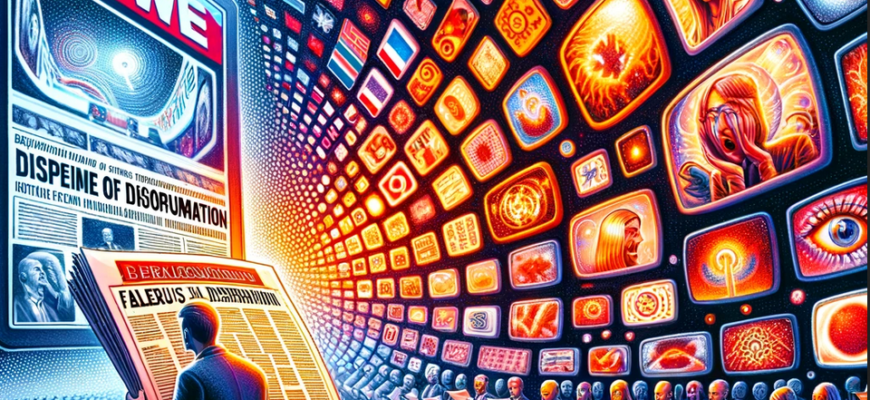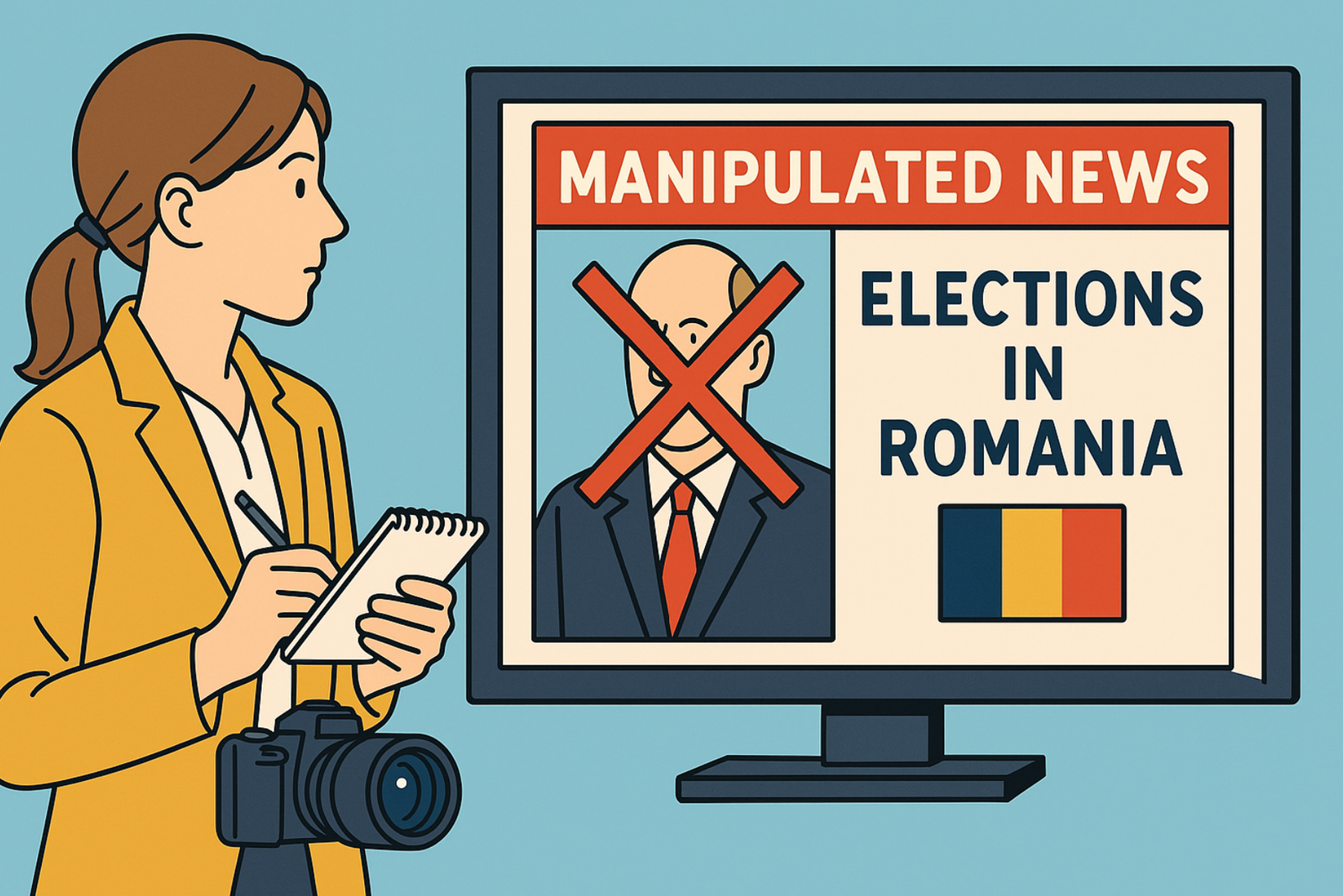This publication will provide a comparative analysis of the number of publications in Belarusian telegram channels in which the word form “fake” or “disinformation” was used.
The hypothesis was built on the notion that Belarusian authorities and media with state ownership often use these terms as clichés, while frequently serving as sources of unreliable information and/or relaying Russian disinformation and propaganda.
Conceptual Framework:
“Fake” and “disinformation” are terms used to describe false or distorted information, but there are differences in the context of use and the purpose of dissemination.
Fake refers to false information or a forgery created with the intention to deceive or mislead. This can be anything from fake documents and photographs to false news and rumors. Fakes are often created to make an impression, shock, or spread false claims. An example of a fake could be a fabricated story circulated on social media that has no basis in reality.
Disinformation is a broader term that describes the spread of false information with the intent to mislead the public or a specific group of people. Disinformation can include fakes, but also distorted facts, data manipulation, and propaganda. The main goal of disinformation is to influence opinions, views, and behavior. This could be an organized campaign aimed at discrediting opponents, influencing political processes, or shaping public opinion.
Main Differences:
- Purpose: Fakes are most often created for direct deception or shock, whereas disinformation has broader goals, such as influencing public opinion or discrediting groups of people.
- Scale: Disinformation implies a wider and more systematic campaign to spread false information, while a fake might be an isolated instance.
- Complexity: Disinformation campaigns can involve complex strategies, including the use of fakes, skewed statistics, and propaganda, while fakes are usually simpler and aimed at a specific lie or deceit.
Telegram channels are important sources of information for the Belarusian internet audience both in the country and abroad, as indicated by a media consumption study conducted in September-October 2023, initiated by the Digital Skills Coalition and the Belarusian National Platform:
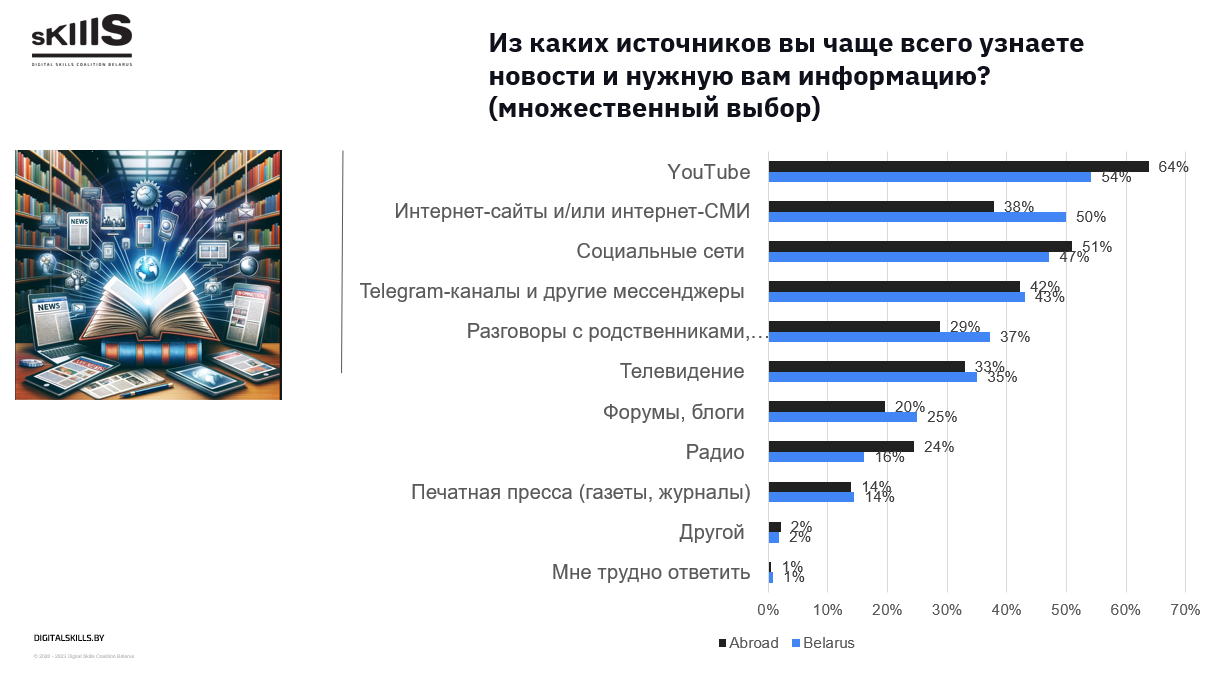
Nearly an equal percentage of respondents named Telegram channels or other messengers as a source of news and necessary information: 43% of respondents in the country and 42% abroad.
The study period was from January 1, 2023, to December 31, 2023.
Only channels associated with Belarus were studied. Reposts were not considered.
In the end, 3,220 publications with the word “fake” and 1,184 with the word “disinformation” were collected. The following graph shows the distribution of publications with these words by month during 2023 and the number of views these publications received:
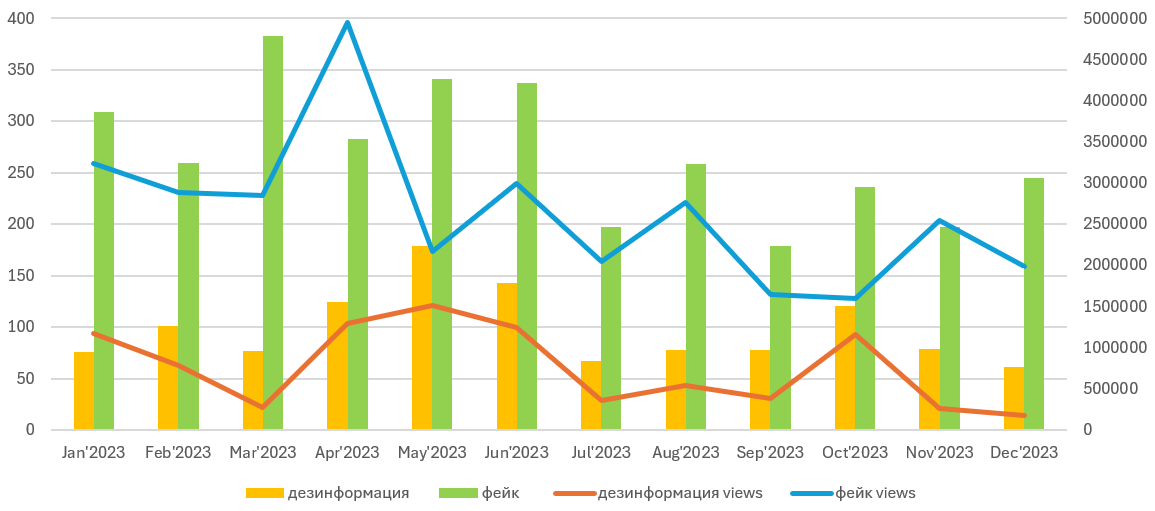
The word “fake” was used in 565 channels throughout 2023. All posts with this word gathered 31,659,237 views!
With the word “fake,” a post on the channel Grodno Leaks – news from Grodno collected 1.82 million views.

In this case, it’s interesting that the Telegram channel is not the largest in Belarus by subscriber count (ten thousand), but due to its disinformation content, it gathered the largest number of views.
The TG-channel ZH Premium used the word “fake” most frequently – 140 times during 2023.
A screenshot showing the twenty publications that gathered the most views:
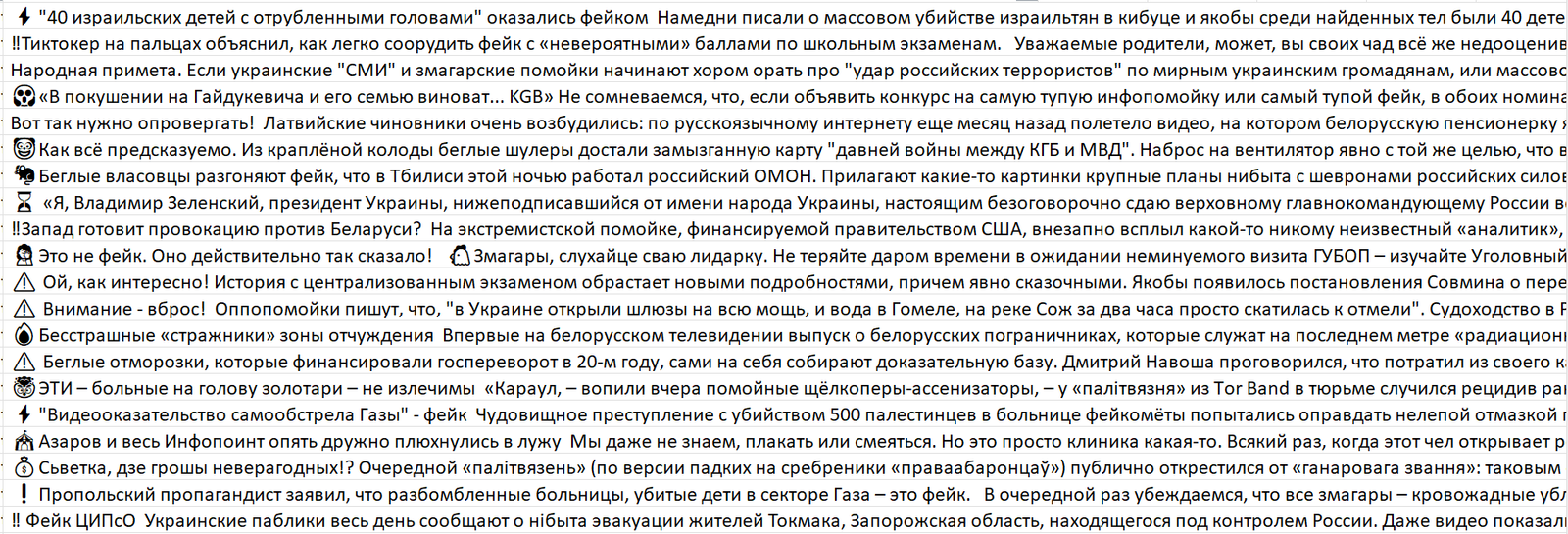
As seen, the main themes are Belarusian political opponents to the current regime, actions of the legitimate Ukrainian government, disinformation about a terrorist act in Israel.
Most posts contain destructive vocabulary. Disinformation sources often use destructive vocabulary for several reasons:
- Emotional impact: Destructive vocabulary can provoke strong emotional reactions in readers or viewers. These emotional reactions can increase the likelihood that people will share the information, spreading it further. Emotions can also hinder the critical perception of information, making people more susceptible to disinformation.
- Manipulation of public opinion: The use of aggressive and provocative vocabulary can be aimed at discrediting opponents or certain groups of people, forming a negative attitude towards them. This contributes to societal division and the intensification of opinion polarization.
- Attracting attention: In an information space oversaturated with content, extreme and destructive vocabulary can help stand out among other messages. This approach is often used to attract attention to topics that might be ignored in a more neutral form.
- Creating an “enemy image”: Destructive vocabulary is often used to create an image of an enemy, the opposition to which can unite a certain group of people. This enhances social cohesion within the group at the expense of a common enemy but also deepens division and conflict in society.
- Simplifying perception: Aggressive vocabulary can simplify complex issues, reducing them to black-and-white perception. This makes the information more accessible to a wide audience but also distorts reality, reducing the opportunity for nuanced analysis.
The use of destructive vocabulary in disinformation campaigns represents a powerful tool for influencing public opinion and the emotional state of the audience, which can have far-reaching consequences for societal stability and democratic processes.
The word “disinformation” was used by 302 Belarusian Telegram channels. The total number of views was 9,164,264. The word was most frequently used by the channels Stop Propaganda – 46 times and ONT NEWS – 35 times.
Twenty publications on the ONT NEWS channel that used the word “disinformation” and gathered the most views:

A large number of publications are related to international news. They seem more complex in construction and presentation of material, but it is noteworthy that the Ukrainian Armed Forces’ counteroffensive is carefully labeled as “disinformation,” which is also unreliable information.
It should be noted that publications include elements of intimidating readers.
- Influence through fear: Disinformation using intimidation can motivate people to act or inaction, depending on the disseminators’ goals. For example, messages intimidating readers with potential security threats can prompt them to spread these messages among close ones in an attempt to “protect” them.
- Enhancing emotional engagement: Elements of intimidation increase the audience’s emotional involvement, making the messages more memorable and prone to spreading.
- Undermining trust in institutions: Disinformation aimed at intimidation can be used to undermine trust in governmental institutions, media, and other organizations, presenting them as insufficiently competent to protect the population from threats. This creates a trust vacuum that disinformation disseminators can fill by offering their “alternative” sources of information or solutions.
- Manipulation of public opinion: Intimidation can be used to shape or change public opinion on specific issues. By exaggerating threats or creating the illusion of a crisis, disinformation disseminators can encourage people to support certain political courses or safety measures that might otherwise be met with resistance.
- Creating conditions for further control: In some cases, intimidation is used to prepare the ground for the introduction of new, stricter control measures or restrictions, presented as necessary for society’s protection. This can lead to restrictions on freedoms and rights under the pretext of responding to threats.
Thus, elements of intimidation in disinformation messages serve as tools for enhancing the impact on the audience, manipulating public opinion, and achieving specific political or social goals. These strategies underscore the importance of critical thinking and verifying information before spreading it.
The Telegram channel with the most views has more than one million subscribers:
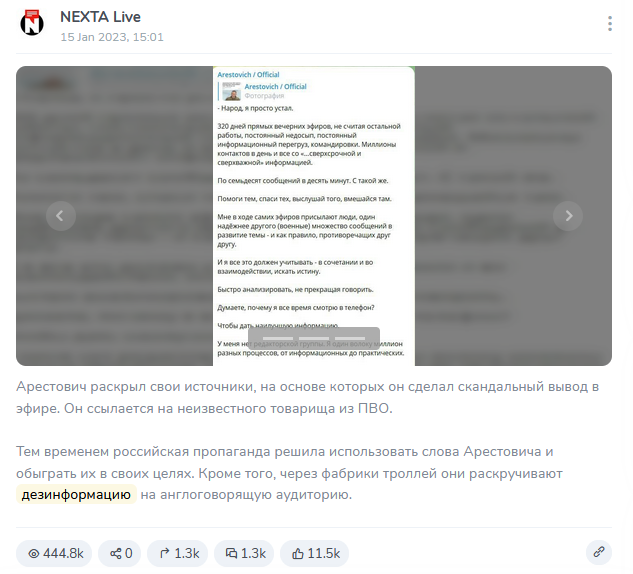
It can be assumed that this channel has a majority of non-Belarusian subscribers.
The data collected during the study will be used for further work on developing tools to counter unreliable information (disinformation) and formulating strategic recommendations.

